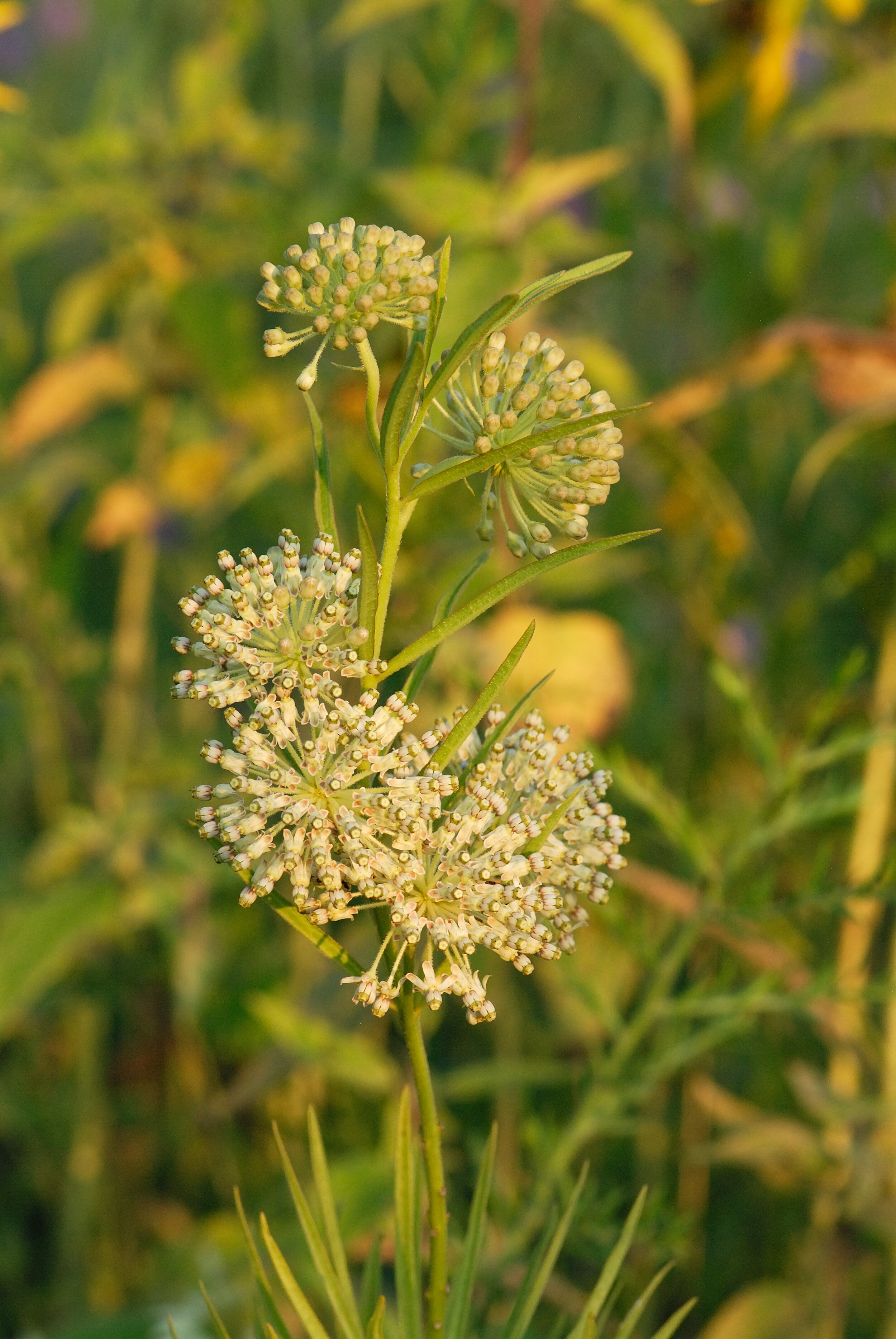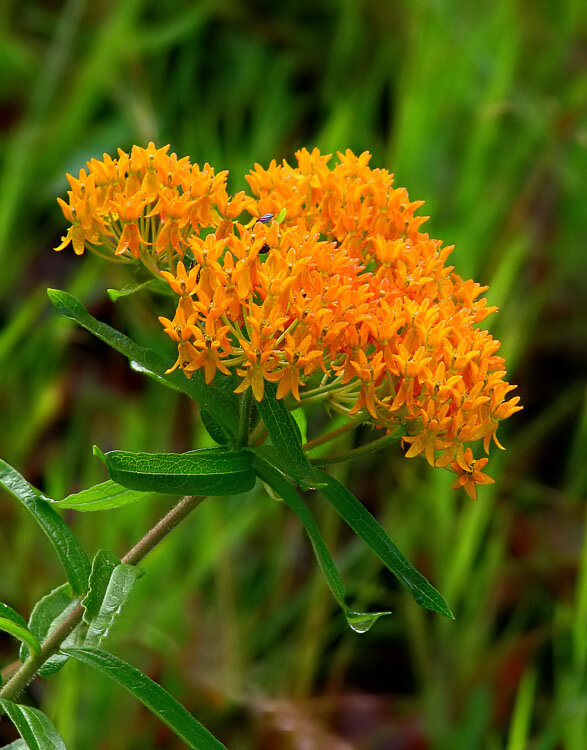The Wetlands Initiative recently completed a five-year monarch butterfly conservation project that, for the first time, crossed two of our major project sites: Midewin National Tallgrass Prairie and the Dixon Waterfowl Refuge. Funded by the National Fish and Wildlife Foundation, the project focused on increasing high-quality habitat for monarchs and also increasing availability of a range of milkweed species, the monarch caterpillar’s only food, across Illinois.
One part of the project involved restoration of prime butterfly habitat on Midewin’s west side, in partnership with the U.S. Forest Service and the National Forest Foundation as part of a larger seven-year restoration effort there. At the same time, TWI ecologists partnered with conservation groups across Illinois to collect milkweed seed from known wild populations at natural areas and forest preserves, including such different species as clasping, tall green, swamp, and prairie milkweed. We then worked with growers to propagate the harvested seed in greenhouses over the winter. In the spring, the seedlings were planted in small clusters at the Dixon Refuge and Midewin to create “monarch hotspots”; these clusters could be easily monitored and their seed harvested in future years.
“There are many native milkweed species, some of which are exceedingly rare in Illinois and their seed virtually impossible to obtain,” said Gary Sullivan, TWI’s senior ecologist. “Our goal was to improve the availability of both common and rare milkweeds by amplifying seed for future use by TWI and others to benefit monarchs. We also learned important lessons about milkweed production!”
Beginning in late summer 2017, TWI scientists were able to collect almost 12 pounds of wild milkweed seed and collaborated with plant nurseries to turn that into nearly 30,000 milkweed plugs, or seedlings. We planted common species like butterfly weed in addition to very rare species that TWI was able to buy in small quantities, like oval-leafed, purple, and spider milkweed. Over the course of the project, we learned that wild milkweed seed production can be unpredictable and that plug propagation can be severely impacted by cold, wet weather conditions in the spring.
Bill Glass, formerly the U.S. Forest Service ecologist at Midewin, helped TWI collect milkweed seed on a part-time basis after his retirement. “There were several factors in successful collection,” he explained. “The first year I was fighting with milkweed bugs, a milkweed seed predator, and they got much of the seed before I could. It also seemed to me that some milkweed species would have a very productive year, and the next would be less so. Finally, I observed a lot of seedpod ‘abortion,’ where the pods would appear to be developing well but then later aborted and never produced seed. Getting the necessary precipitation at the right time of year may be crucial.”
Keeping seed predators away from a newly forming seedpod. Photo by Bill Glass.
One solution Glass found to these challenges, though time-consuming, was to monitor known milkweed locations and tie small cloth bags around newly forming seedpods to exclude seed predators. Seedpods on individual milkweed plants often ripen at different times and we learned it was ideal to pick seedpods just before they opened so that seeds were not released to the wind before they could be collected. Through perseverance, a large amount of seed was obtained for propagation.
The National Fish and Wildlife Foundation grant also led to new connections between TWI and other monarch conservation efforts. Through the Pollinator Partnership’s Project Wingspan, volunteers have collected seed of several important native species at the Dixon Refuge and Midewin with the goal of building a seed supply for restoring pollinator habitat throughout the Chicago Wilderness region. And through Monarch Watch’s Free Milkweeds for Restoration Projects program, TWI was able to get thousands of milkweed plugs at no charge to supplement the plugs we propagated during our project.
Thousands of propagated milkweed seedlings await planting at Midewin in spring 2020. Photo by Jason Pettit/TWI.
“We’re thrilled to get to participate in these broader efforts to help monarchs and other rare pollinators, both by providing a source of seed to amplify nectar-producing natives and by receiving milkweed plugs to diversify prairie habitat,” said Dr. Sullivan. “With so many milkweeds now planted at our project sites, hopefully the benefits will continue to multiply far into the future.”
Learn more about the declining monarch butterfly and national conservation efforts: monarchjointventure.org
You can plant many native flowers at home to help monarchs: xerces.org/monarchs/monarch-nectar-plant-guides
Follow the monarchs on their current fall migration and report your own sightings: journeynorth.org/monarchs/news/fall-2021/09082021-monarchs-move






